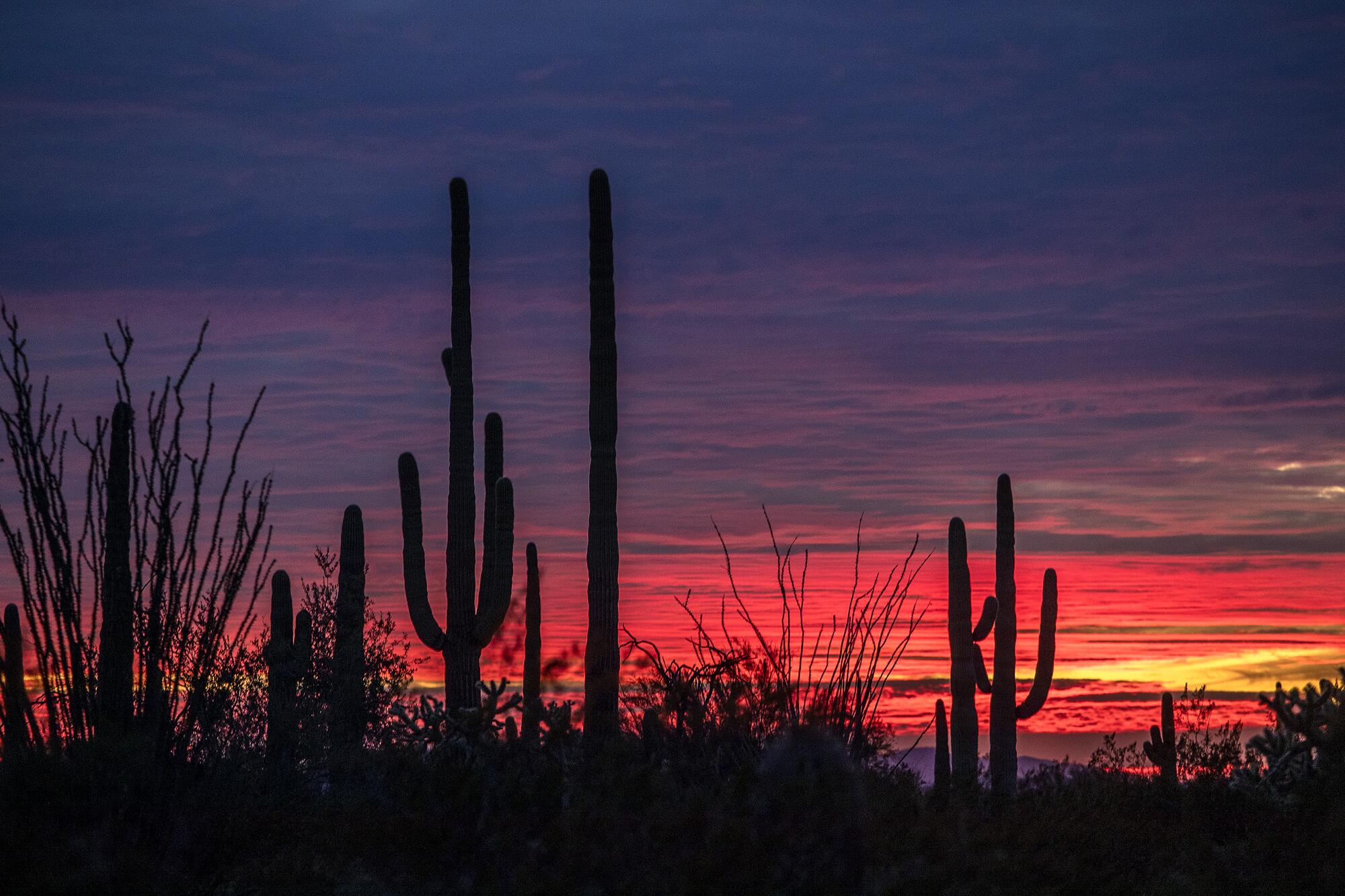
In Arizona, cactus rustling — stealing or killing the state’s iconic saguaros — is a felony. It’s illegal to shoot or deface the iconic cactuses or to remove them from parks, where the slow-growing succulents can reach more than 60 feet and live up to 200 years. Violators are pursued by state agricultural police, or “cactus cops.”
That hasn’t stopped federal contractors from plowing over saguaros to make room for President Trump’s border wall.
At least a half-dozen saguaros were uprooted this month by crews clearing a dirt road next to new border fencing at Organ Pipe Cactus National Monument, about 150 miles southwest of Tucson, near the Lukeville border crossing.
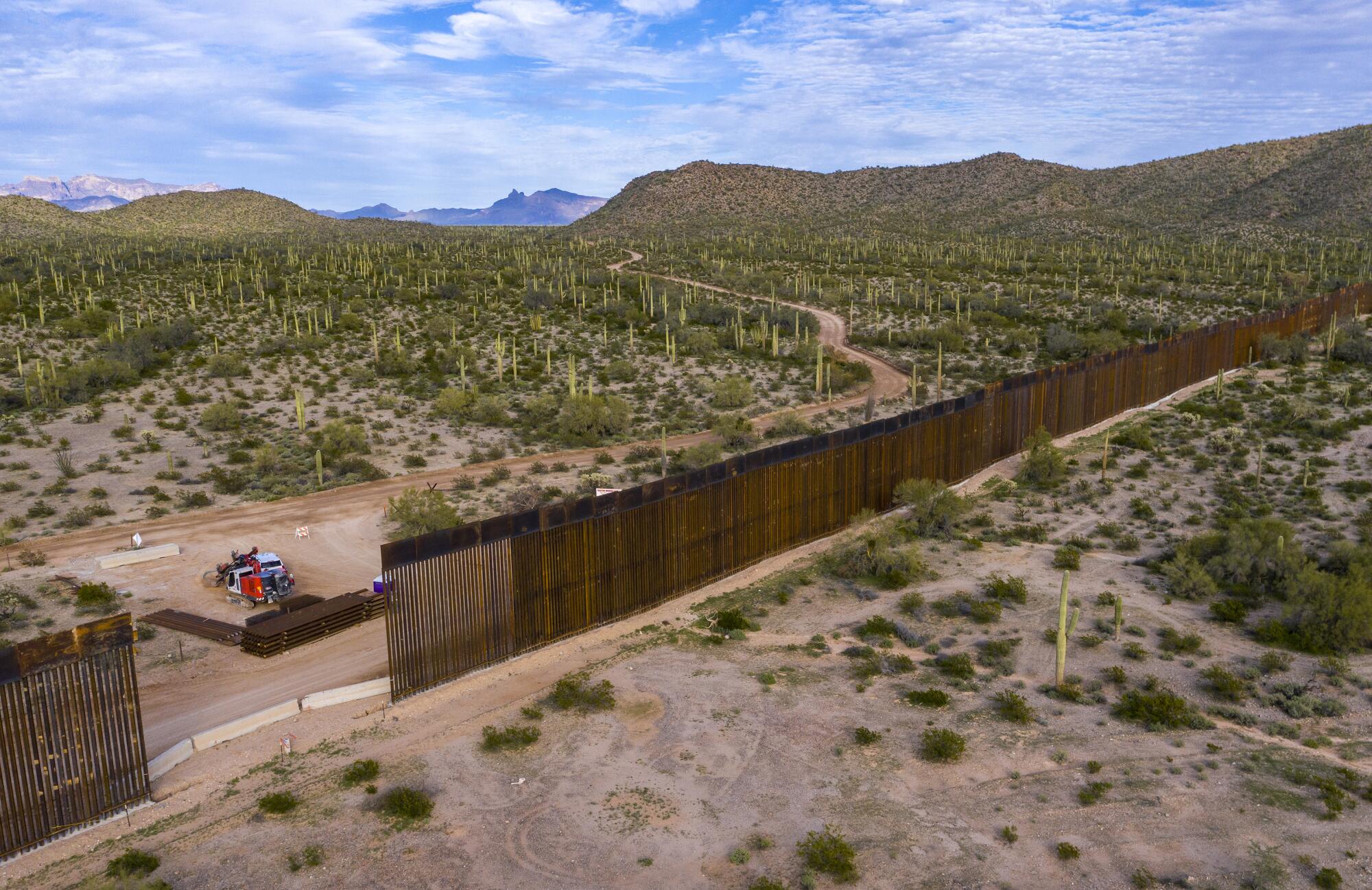
Remains of the saguaros, some of which stood taller than the 30-foot wall, were dumped, under some other debris, near a hill that crews started blasting with explosives this month to build the wall. The company, Southwest Valley Constructors, has a $789-million contract from U.S. Customs and Border Protection to build 38 miles of border fence in the area.
“They have quite clearly tried to hide the body of this cactus,” said Laiken Jordahl, a former Organ Pipe park contractor who is now a campaigner for the Tucson-based Center for Biological Diversity, which has sued to stop the wall.
During a visit to the construction site last week, Jordahl took photos and video of what he called saguaro “carcasses.” He has posted footage online, spurring outrage. The cactuses are typically described in anthropomorphic terms: the outstretched branches are “arms”; the bare spines, “ribs”; and the “skeletons” of saguaros that died, evidently of natural causes.
It’s easy to see why Arizona’s Tohono O’odham tribe believe saguaros have spirits.
“They really all do have their own personalities,” Jordahl said. “Some of them have been here longer than the border itself. What right do we think we have to destroy something like that?”
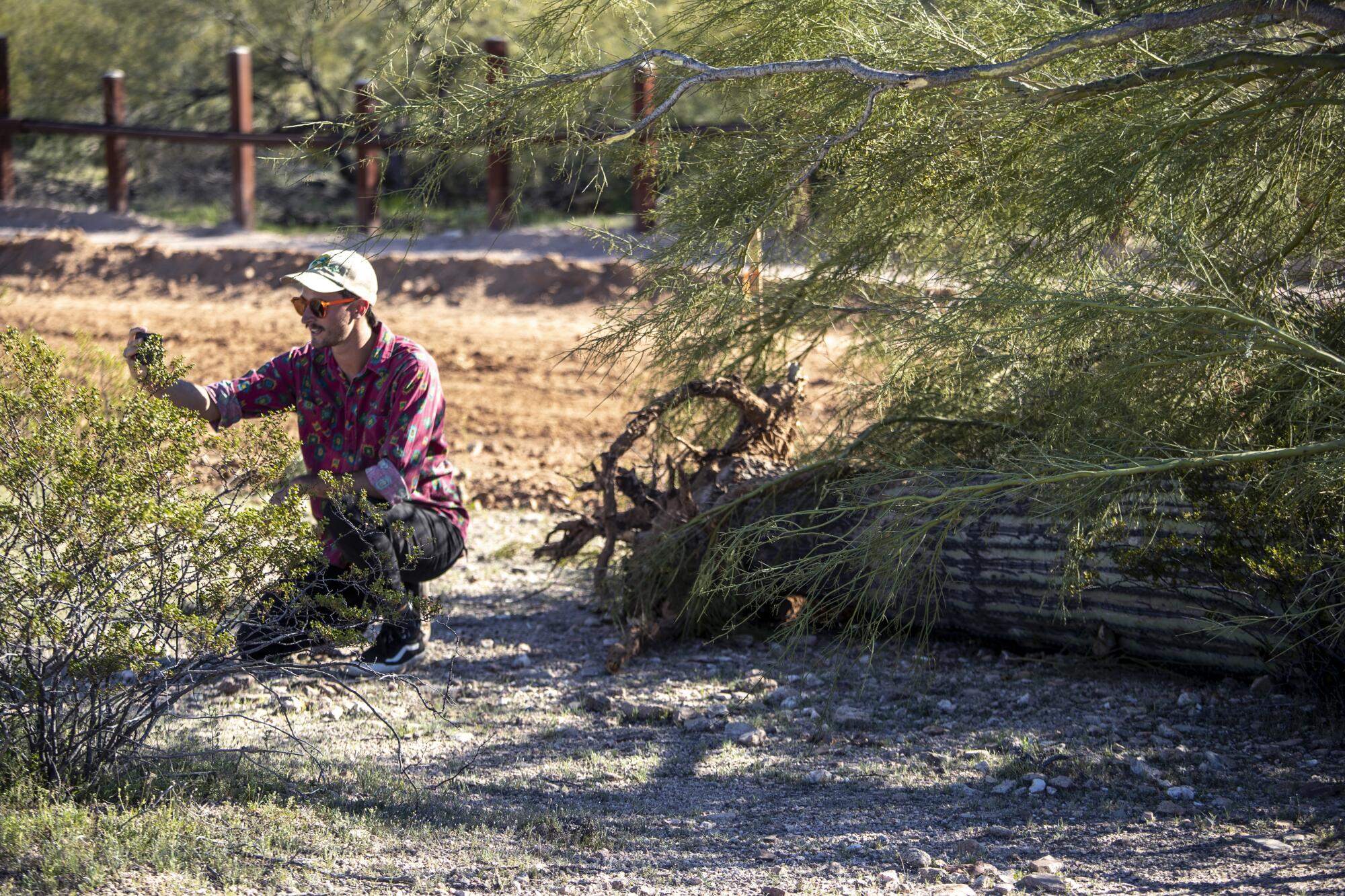
The saguaro blossom is Arizona’s state flower, and the saguaro has its own federal park in Tucson. Even on private land, you need a state permit to move them. On the Tohono O’odham reservation — the largest within Arizona — saguaros are considered sacred, the tribal calendar organized around the harvest of their sweet red fruit. Nurseries charge $100 a foot for saguaros; mature plants can go for thousands of dollars.
Border Patrol officials say that contractors have destroyed only a few saguaros, and only ones that were unhealthy and could not be salvaged. Some scientists disagree, pointing out that transplanting a large cactus is often tantamount to killing it.
Over 90% of the cactuses in the border wall construction area near Organ Pipe have been “carefully transplanted,” Roy Villareal, the chief of Border Patrol’s Tucson sector, which includes Organ Pipe, wrote on Twitter, saying he wished to dispel “misinformation.”
As of this week, the agency and the National Park Service had moved 2,200 cacti from the area. Before wall construction began, “the agencies collaborated on a vegetation and plant relocation plan to minimize impacts to protected and sensitive plants,” said Matthew Dyman, a Border Patrol spokesman.
He said workers had mapped “cacti and other protected plants” within the 60-foot federally owned border zone — known as the Roosevelt Reservation — where the wall and an adjacent access road are being built. Workers were trying to preserve agave, ocotillo and various cactuses including saguaro, fishhook, night-blooming cereus, senita, barrel, hedgehog and the park’s namesake Organ Pipe, he said.
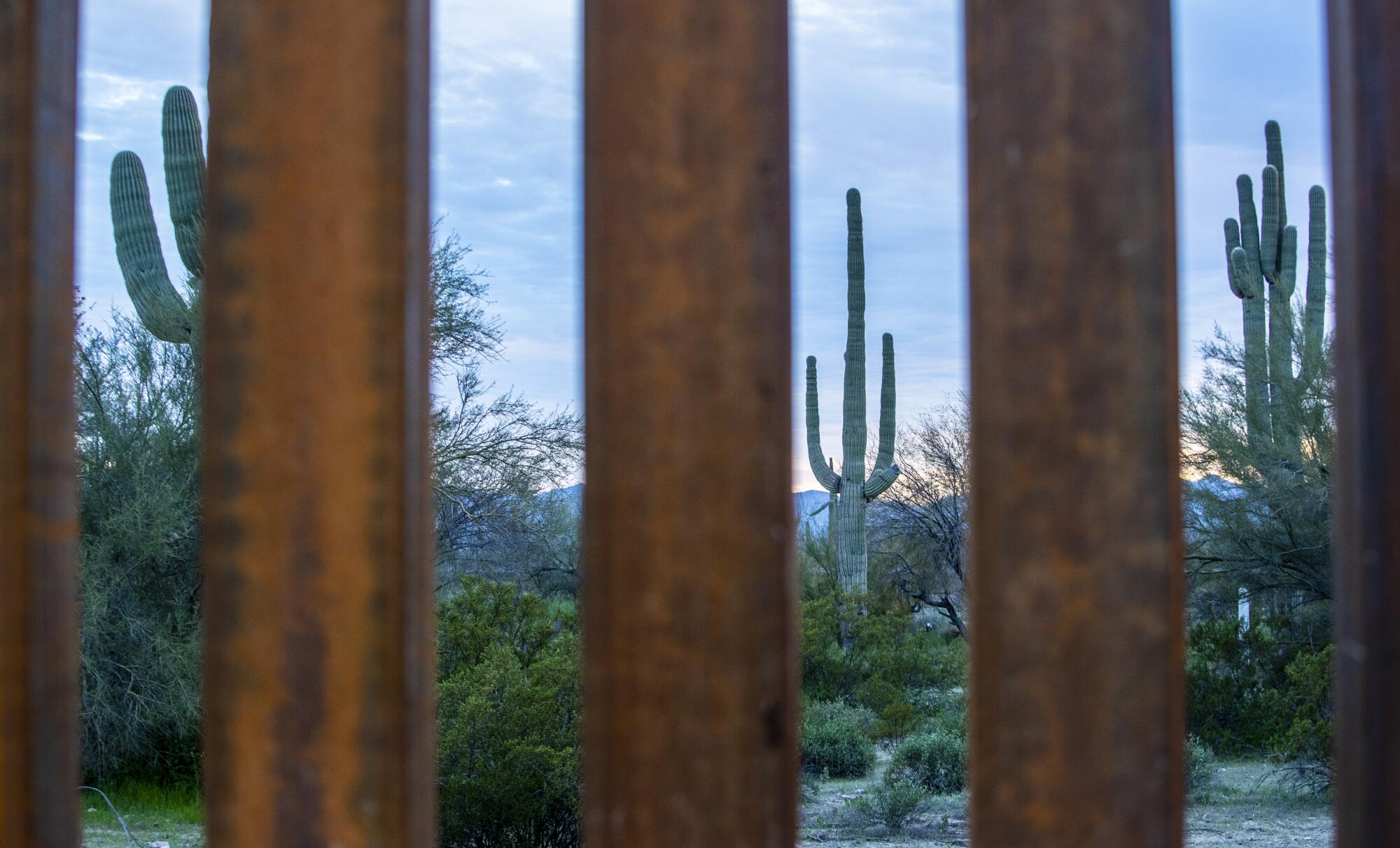
Less than 10% of cactuses in the border wall construction zone at Organ Pipe have been removed so far, he said, and healthy plants have been transplanted elsewhere in the park.
On Tuesday, Villeareal tweeted a video of the construction site and insisted that the Border Patrol has “environmental and cultural monitors” on site.
“If they find something, work stops,” the video says.
Jordahl remains skeptical.
“Every time I visit I see hundreds of butchered cacti,” he said.
During a visit on Feb. 18, it was not clear which saguaros at Organ Pipe had been marked for destruction. In the path of the access road widening stood two saguaros — each more than 30 feet tall with an arm, suggesting that they were at least 95 years old. They showed no signs of decay. Nonetheless, the next day, workers had widened the road, uprooted, chopped and discarded the two saguaros under other brush.
On Wednesday, Dyman, the Border Patrol spokesman, declined to comment about the two cactuses.
The cactuses could soon be threatened elsewhere. To the west in Cabeza Prieta National Wildlife Refuge, crews from Tempe, Ariz.-based Fisher Sand & Gravel Co. could be seen skirting saguaros as they widened the main east-west dirt road, Devil’s Highway. Fisher has a $268-million contract to build about 31 miles of border fence in the area.
Road widening is scheduled to begin soon, including a “relocation plan” for saguaros and other cactuses, Andrew Kornacki, a spokesman for the U.S. Army Corps of Engineers, which is coordinating border wall building with the Border Patrol.

A licensed arborist will inspect the plants’ health and likelihood of successful transplantation in the area, then an environmental monitor will verify the number and location of plants to be moved by hand with a shovel and protective wrapping or by a specially equipped cradle truck, he said. The cactuses’ health is then monitored for a year.
There’s not much that saguaro defenders can do to stop federal contractors from felling them. They’re not endangered like other southern Arizona cactuses, such as the Acuña and hedgehog cactus, though federal courts have allowed the Trump administration to waive environmental laws protecting even those species in the wall’s path. Lawsuits by environmental groups have so far failed to halt construction.
Rep. Raúl M. Grijalva, an Arizona Democrat who represents the Organ Pipe area, and Ned Norris Jr., chairman of the Tohono O’Odham, which has about 35,000 members, of whom roughly half live in the reservation, visited the park together last month. They complained about the environmental damage border wall construction was causing and pleaded with the Border Patrol to stop and consult with local officials. Instead, in addition to destroying saguaros at Organ Pipe, construction crews used explosives this month to blast a path for the wall through Monument Hill, a Native American burial ground.
“Saying the Border Patrol cares about the environmental impacts of border wall construction is absurd to anyone who has seen the destruction at Organ Pipe,” said Grijalva, who led a hearing in Washington on Wednesday about the effect of border wall construction on indigenous communities. “Waived laws along the borderlands have facilitated this destruction at an alarming pace. If construction continues, the damage to the iconic saguaros of Southern Arizona will be irreparable.”

In a statement, Norris said the saguaro “has deep cultural significance” to his people as a traditional food source and that the harvest brings families together to mark the start of the O’odham new year.
“Attempts to gloss over the needless destruction of saguaros is another reminder of the harm being caused by the ridiculous border wall,” Norris said. “All of this is being done as federal agencies still have not held any meaningful consultations with the nation, which are mandated by federal law and executive order.”
Moving saguaros can be delicate business. Saguaros rely on a carrot-shaped tap root that runs several feet deep and a complex network of shallow roots that can extend nearly 20 feet and are difficult to reestablish, especially if they’re moved to a different type of soil, and may rot if untreated, according to Bill Peachy, a Tucson-based independent scientist who has researched and rescued the cactuses for years. Problems are not always immediately apparent, he said: Just as saguaros grow slowly, it can take years for them to die.
“They’ve put them on a path where they won’t survive,” Peachy said of transplanted saguaros.
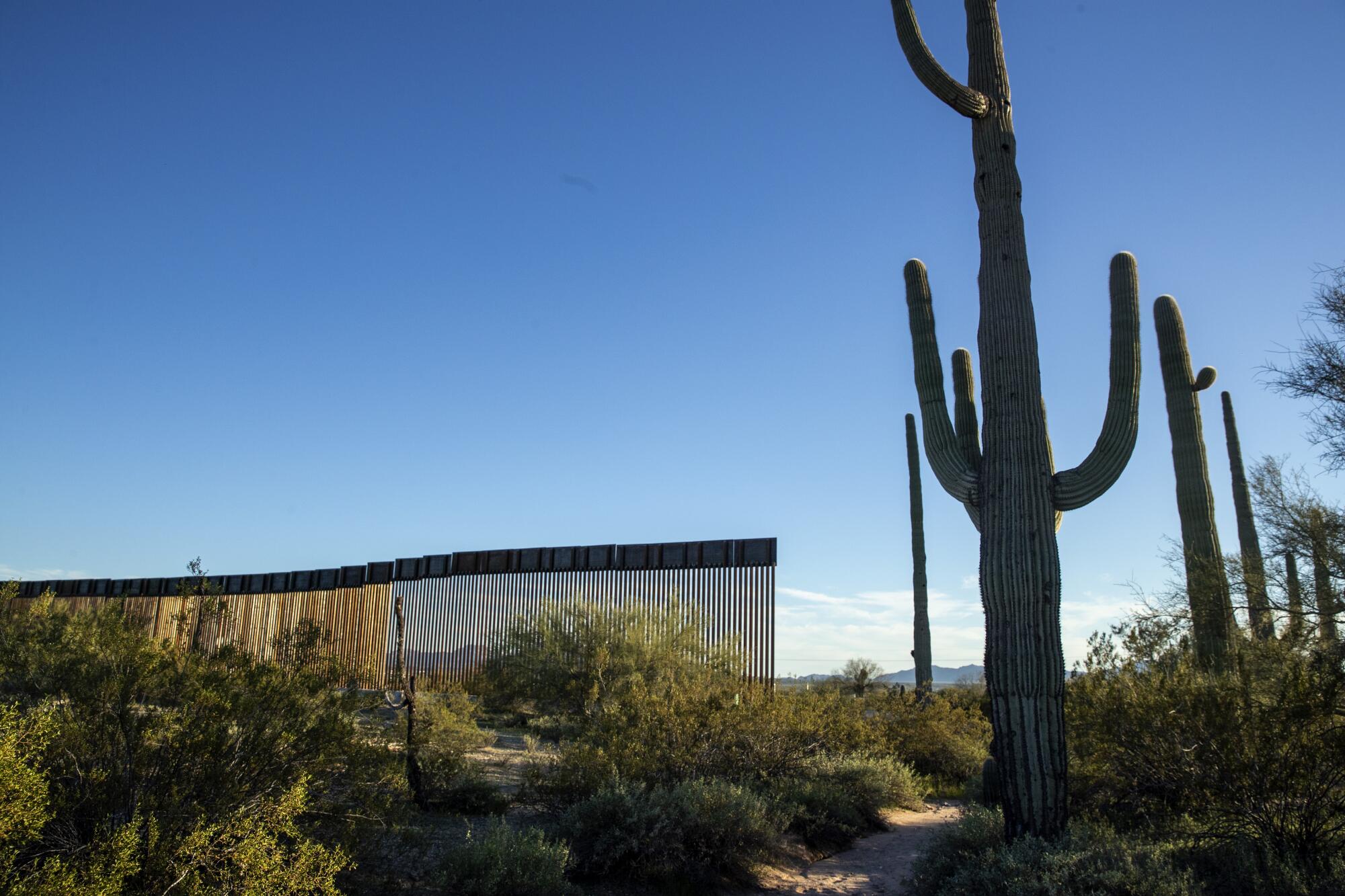
When hydrated, saguaros can weigh more than 2 tons, and those with arms require added support. The National Park Service recommends against transplanting saguaros when temperatures dip below 60 degrees, as they did in Lukeville this month.
“The bigger it is, the harder it is,” said Bill Holcombe, who serves on the board of the Tucson Cactus and Succulent Society, which he said has rescued 100,000 cacti in the past 20 years.
Holcombe’s group doesn’t transplant cacti more than 5 feet tall, which he said require skilled contractors with special equipment.
“When they’re digging it up along the border for the wall, hopefully they’ve got some responsible people doing it,” he said. “People hate to see them destroyed.”
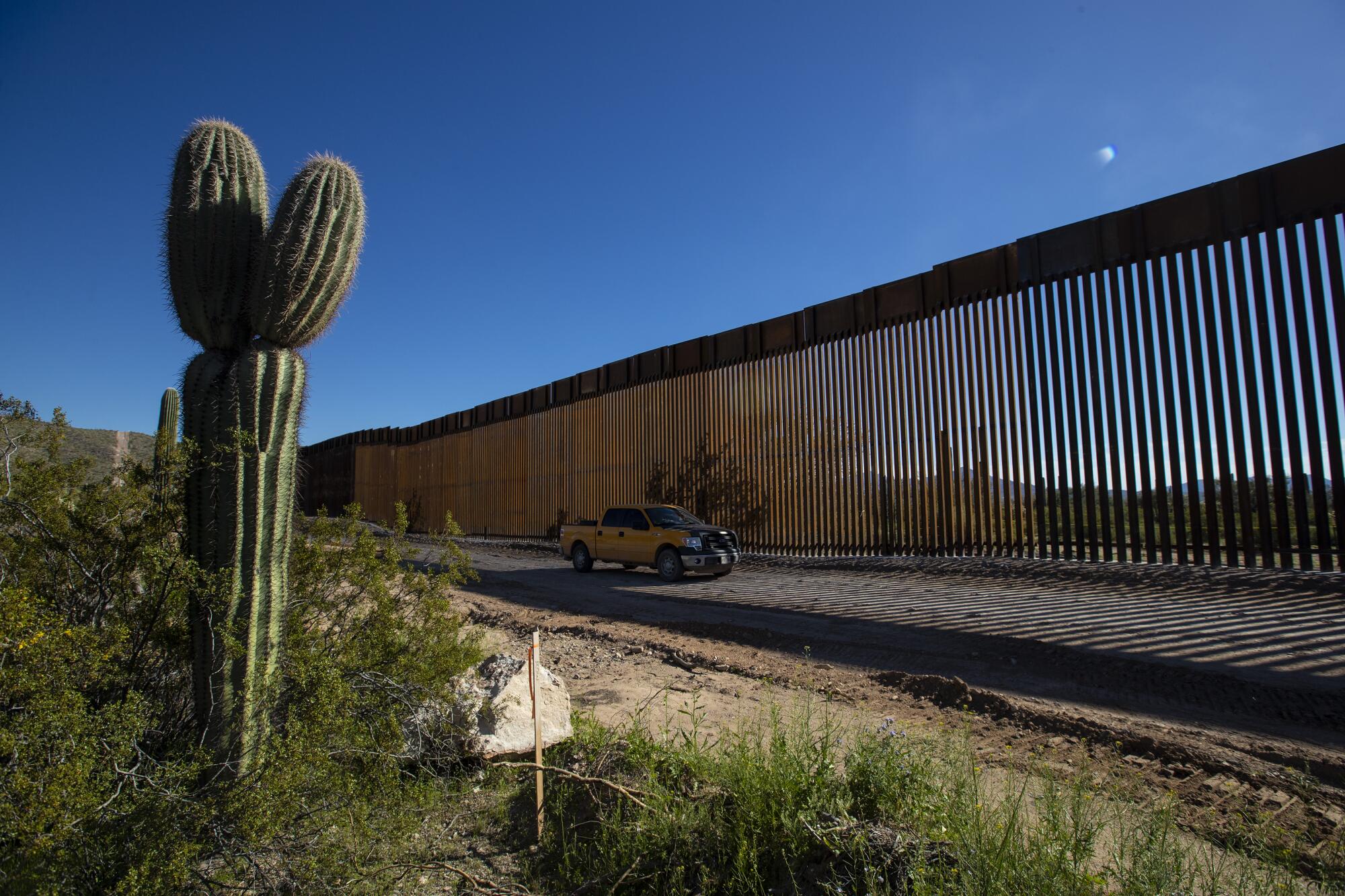
More to Read
Start your day right
Sign up for Essential California for news, features and recommendations from the L.A. Times and beyond in your inbox six days a week.
You may occasionally receive promotional content from the Los Angeles Times.







